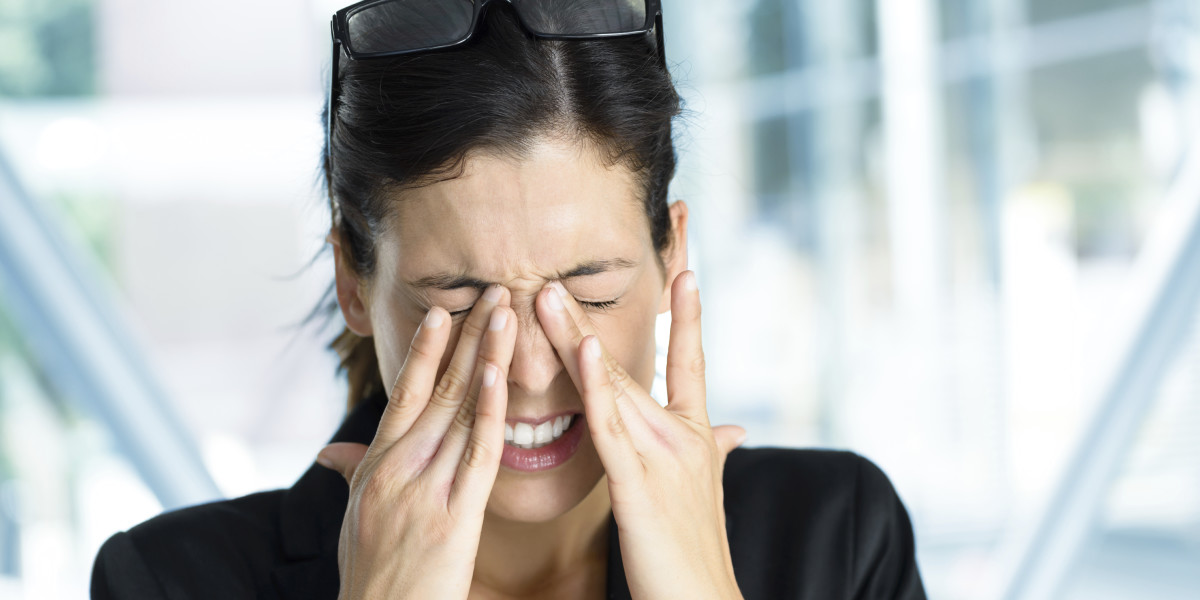What is dry eye syndrome?
Your eyes need tears to stay clean and healthy. Tears are made by glands behind your upper eyelid. Every time you blink, the tears are pushed across your eye, keeping it moist. They flow into tiny openings, called tear ducts, in the inner corners of your eyelids, where they drain away.
With dry eye syndrome, your tear glands don’t make enough tears or your tears evaporate too fast. Dry eye syndrome may go away with treatment. But for some people, it can be a lifetime problem.
This problem is more common in older adults and in certain diseases, such as diabetes, allergic conjunctivitis or Sjögren’s syndrome.
An eye doctor can usually tell that you have dry eye syndrome during a regular exam and after hearing about your symptoms. In some cases, you may have a special test to see if your eyes are making enough tears.
It is important know that there is no cure for dry eyes. There is no magic pill or eyedrop that will fix your symptoms. It is a chronic condition that will require constant maintenance therapy to keep your eyes comfortable and symptom-free most of the time. Remember, dry eyes do not develop overnight.
Seven tips to prevent and treat dry eyes
- Hydrate! Drink lots of water. It’s great for every part of your body, including your eyes.
- Take frequent breaks from heavy computer or other close work. For every 30 minutes of staring at your computer/tablet/smartphone/paperwork/books, stop and look away at something in the distance for 20 seconds (alternatively, you can close your eyes for 20 seconds), then resume what you were doing.
- Wear sunglasses that wrap around the sides of the head. These can protect the eyes from sun, wind, dust and dirt.
- Use a vaporizer or humidifier to add moisture to your bedroom. Follow the directions for keeping the machine clean.
- Put a warm, moist cloth on your eyelids every morning for about five minutes. Then massage your eyelids lightly. This helps increase the natural wetness of your eyes.
- Remove eye makeup well at night. Do not fall asleep with your eye makeup on. Over time, eye makeup can clog the oil gland pores on the eyelid margins and lead to dry eyes. Also, soap and water are not good enough to remove eye makeup; use proper eye makeup remover.
- Take care with artificial tears. There are only a few good over-the-counter brands that are worth your hard-earned cash. Talk to your eye doctor for a recommendation. And keep in mind that these dry-eye drops are only a small part of the treatment regimen.
If you wear contact lenses
- Follow the care and replacement schedule for your particular brand of contact lens given to you by your eye doctor.
- Keep your lenses and all supplies very clean. Always wash and rinse your hands thoroughly before inserting or removing lenses. Do not apply hand lotion before handling your contacts.
- Always rinse the lens storage case. Let it air dry to avoid contamination.
- Replace your lenses at their scheduled time and not just “when they feel bad.”
- Insert your lenses before applying makeup. Take care not to get makeup on the lenses. Replace eye makeup (especially mascara) every 3 to 6 months to reduce the risk of contamination. Do not apply makeup to the inner rim of the eyelid.
- If this proper care regimen is too much hassle for you, then consider switching to daily disposable contact lenses. These are single-use lenses that you throw away every night — no cleaning, no solutions, no cases. These lenses have become more popular because of their convenience factor, but they are also great for dry eye and allergy sufferers, part-time wearers and business or vacation travel.
When should you get help?
Watch closely for changes in your health, and be sure to contact your doctor if:
- Your eyes are still dry, irritated, or teary, and artificial tears do not help.
- Your vision changes.
- You do not get better as expected.



